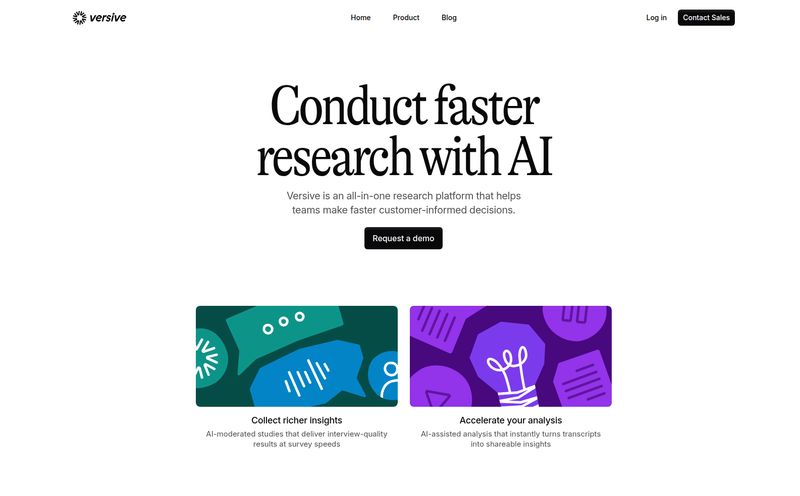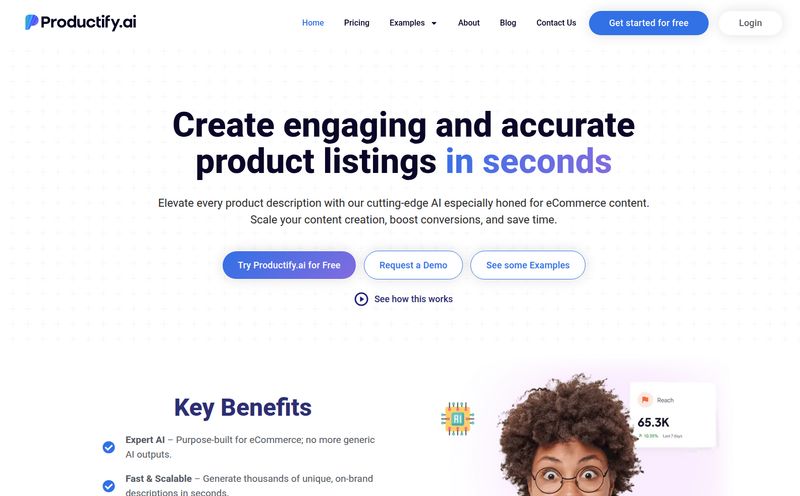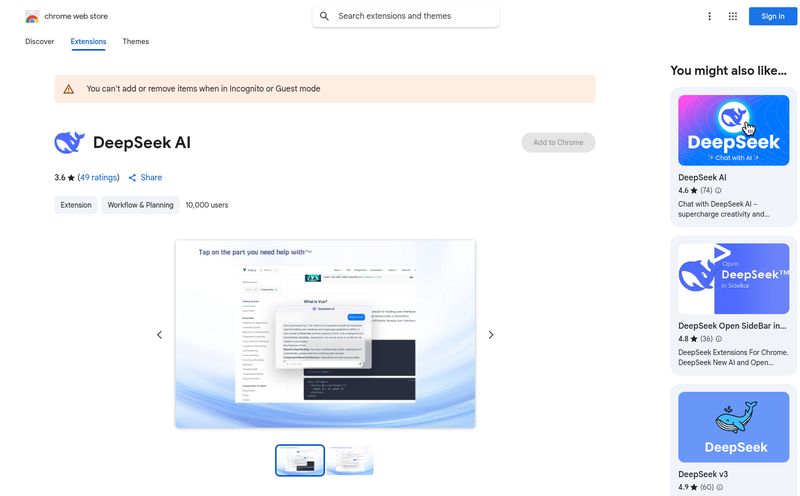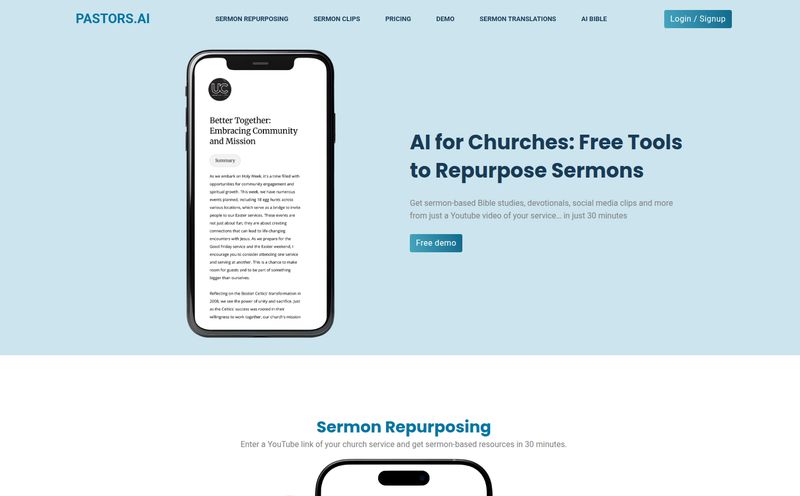I’ve been in the SEO and digital marketing game for years, and if there’s one thing I’ve learned, it’s that communication is everything. Not just between you and your audience, but across the entire globe. I’ll never forget the time I was in a small market in Lisbon, trying to buy a specific type of ceramic tile for my kitchen backsplash. My Portuguese was, shall we say, enthusiastic but terrible. It involved a lot of pointing, frantic gesturing, and me accidentally asking for a “sad fish” instead of a “blue tile.” Fun times.
It’s moments like that when you truly appreciate the gravity of a simple language barrier. So, when I stumbled upon a new tool called ULOCAT, the landing page hit me with a simple, almost profound promise: “Understand Each Other.” No flashy graphics, no over-the-top marketing spiel. Just a clean interface and a goal that felt... well, important. It got me curious. Could this be the tool that finally gets translation right?

Visit ULOCAT
So What Exactly is ULOCAT?
At its core, ULOCAT presents itself as an AI-powered natural language translation tool. Okay, we’ve seen those before, right? From Google Translate to DeepL, the market isn't exactly empty. But ULOCAT seems to be aiming for something a bit deeper than just literal, word-for-word conversion. The whole idea is to facilitate effortless global communication.
It’s built on a foundation of some pretty heavy-hitting tech: Artificial Intelligence, Natural Language Processing (NLP), and what they call “Cultural Context Translation.” That last one is what really made me lean in. It's not just about swapping words; it’s about understanding the meaning, the nuance, and the culture behind them. It promises to handle text, voice, and even image-based input, making it a potential all-in-one communication sidekick.
The Features That Actually Matter
Let's cut through the jargon. What does this thing actually do? Based on what I could dig up, a few features stand out from the usual crowd.
More Than Words: The Cultural Context Engine
This is the big one. For me, this is the potential game-changer. Most translation tools are like dictionaries on steroids—they’re technically accurate but often miss the soul of a conversation. They don't get idioms, they don't understand sarcasm, and they certainly don't get why saying “bless your heart” in the American South can be either a term of endearment or a savage insult.
ULOCAT’s claim to fame is its ability to interpret and translate with cultural context. It’s the difference between translating “it’s raining cats and dogs” literally (which would be terrifying) and explaining that it just means it's raining very heavily. This feature is like having a local friend whispering in your ear, giving you the real scoop. If it works as advertised, this could prevent a world of misunderstandings, from business negotiations to ordering dinner.
Just Talk: Real-Time Voice Translation
The platform also heavily pushes its real-time voice translation. This isn’t new technology, per se, but the emphasis on a seamless, easy-to-use voice input is key. The goal is to make conversations feel natural, not like a clunky, turn-based affair where you speak, wait for the robot to translate, and then wait for the other person to respond. In a world where we're all constantly on the move—think digital nomads, international business travelers, or just curious tourists—having a reliable voice translator in your pocket is invaluable. No more sad fish incidents for me, hopefully.
My Honest Take: The Good and The… Murky
Alright, so here's where my experience as a blogger kicks in. I’ve seen hundreds of tools promise the world. Some deliver, some... don't. With ULOCAT, I'm optimistic but also a little cautious.
On one hand, the promise is incredible. The focus on connecting people and breaking down real barriers is something I can get behind. The interface looks clean, and the core ideas are solid. We desperately need more nuance in our cross-cultural conversations, and an AI that can help with that is a massive win for everyone. It feels less like a sterile utility and more like a tool for genuine human connection.
On the other hand, there are some question marks. Big ones. As I started digging for more concrete details, I hit a few walls. The information on which specific langauges are supported is surprisingly sparse. How fast is the translation? Are there limits on usage? These details are critical for anyone looking to rely on this professionally.
The Million-Dollar Question: What’s the Price?
And this brings me to the biggest wall of all. The pricing. I did what any good reviewer does—I went looking for the pricing page, ready to see if this was a freemium model, a subscription, or a one-time purchase. And... I was met with a 404 Page Not Found error. Yep. The page just wasn't there.
Now, this could mean a few things. Maybe the tool is in a pre-launch or beta phase. Maybe they're revamping their pricing structure. Or maybe it's just a broken link. Whatever the reason, it's a bit of a red flag. It’s hard to fully evaluate or recommend a service when you have no idea what the barrier to entry is. For now, the cost of ULOCAT remains a mystery.
Who Is ULOCAT Really For?
Despite the unknowns, I can see a clear audience for a tool like ULOCAT. If it lives up to its potential, it would be perfect for:
- World Travelers and Digital Nomads: For navigating daily life in a new country, from asking for directions to making new friends.
- International Business Professionals: To ensure that nuances aren't lost in translation during important meetings and negotiations.
- Language Learners: As a powerful tool to understand not just the words, but the cultural context behind them, which is often the hardest part of learning a new language.
- Content Creators and Marketers: For localizing campaigns and ensuring that marketing messages resonate authentically with a global audience.
Final Thoughts on This Promising New Tool
So where do I land on ULOCAT? I'm intrigued. Deeply. The world needs more understanding, and technology that aims to provide it gets an immediate thumbs-up from me. The focus on cultural context over literal translation is, in my opinion, the correct path forward for this kind of AI.
However, the lack of transparency around its specific capabilities and pricing makes it a bit of a gamble right now. It feels like an incredibly promising beta that hasn't quite hit primetime. I’m rooting for ULOCAT. I really am. I hope they flesh out the missing details soon, because the vision here is one we can all get behind. A world where we can all truly “Understand Each Other” is a world I want to live in.
Frequently Asked Questions About ULOCAT
What is ULOCAT?
ULOCAT is an advanced AI-powered translation tool designed for natural, cross-language communication. It focuses on providing high accuracy by not just translating words, but also interpreting cultural context, and supports voice, text, and image inputs.
How is ULOCAT different from Google Translate?
The primary differentiator is its emphasis on “Cultural Context Translation.” While tools like Google Translate are excellent for literal translations, ULOCAT aims to understand and convey idioms, social nuances, and cultural specifics to prevent misunderstandings and create more natural conversations.
Is ULOCAT a free tool?
Currently, there is no public information available about ULOCAT's pricing. The official pricing page is not active, so it is unclear if it will operate on a freemium, subscription, or other pricing model.
What languages does ULOCAT support?
Unfortunately, detailed information about the specific languages supported by ULOCAT is not yet available. This is one of the key details that potential users are waiting for.
Can I use ULOCAT for real-time conversations?
Yes, one of its main features is real-time voice translation. It's designed to facilitate smooth, natural-sounding conversations between people speaking different languages without significant delays.
Who would benefit most from using ULOCAT?
Individuals and professionals who frequently interact with people from different cultures would benefit greatly. This includes international travelers, digital nomads, global business teams, and language students who want to deepen their understanding of a language's cultural nuances.
Reference and Sources
Information for this review was sourced from the official ULOCAT landing page and publicly available data about the tool's features and goals. For more on the evolution of AI translation, you might find this article from Forbes on AI in translation insightful.



